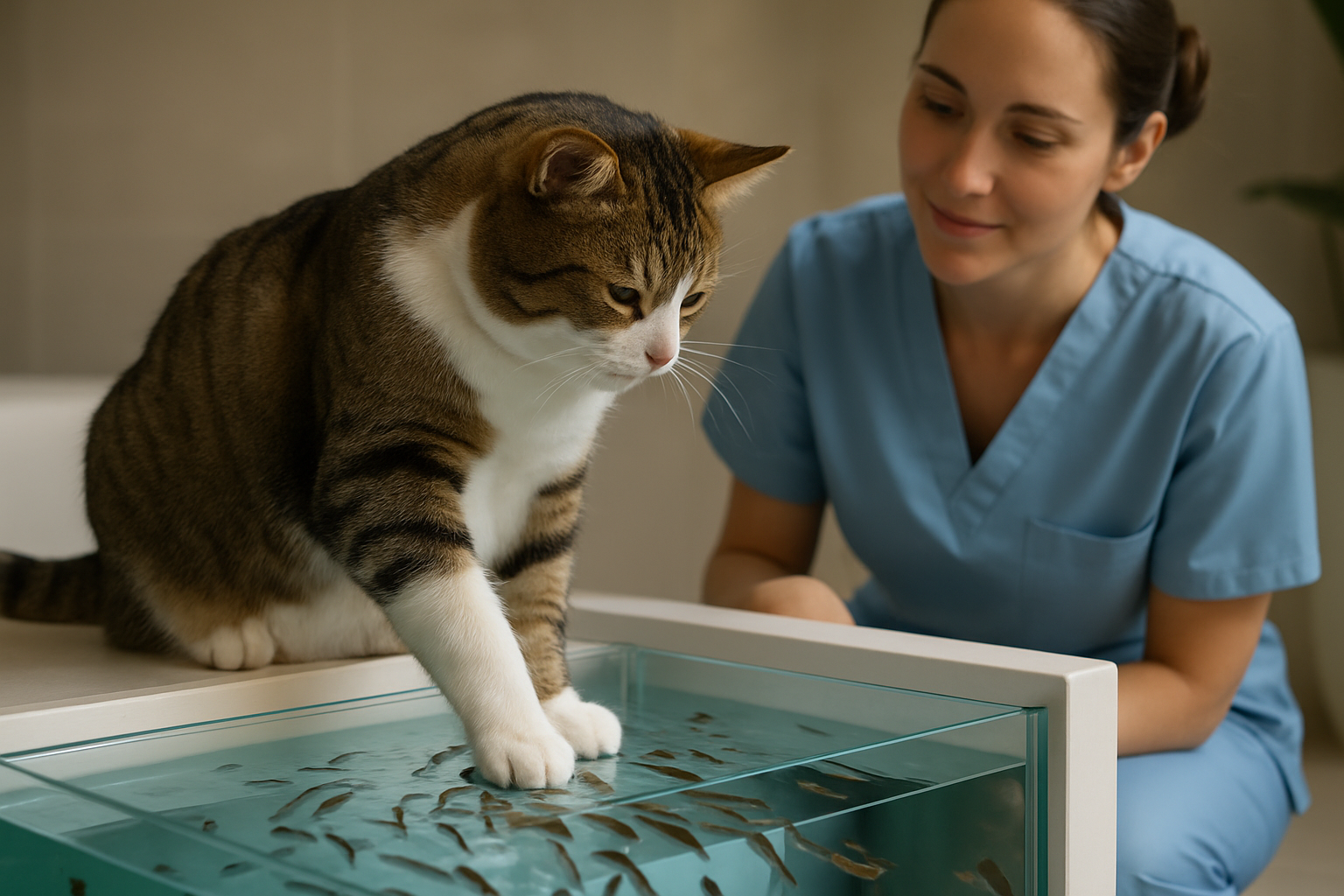Aquatic Paw-radise: The Rise of Fish Spa Therapy for Pets
Imagine your beloved furry friend lounging by a tranquil pool, their paws submerged in crystal-clear water teeming with tiny, helpful fish. This isn't a scene from a whimsical pet fantasy – it's the latest trend in alternative pet therapy sweeping across luxurious pet spas worldwide. Fish spa therapy for pets, once a niche treatment, is now making waves in the animal care industry, promising a unique blend of relaxation and health benefits for our four-legged companions.

The adaptation of fish spa therapy for pets began in high-end pet resorts in Asia around 2015. Initially met with skepticism, the practice quickly gained traction as pet owners reported positive results. From there, it spread to exclusive pet spas in Europe and North America, evolving into a sought-after treatment for pampered pets.
How Fish Spa Therapy Works for Pets
The process of fish spa therapy for pets is surprisingly straightforward. Specially designed pools or tanks are filled with Garra rufa fish and temperature-controlled water. Pets, typically dogs and cats, are gently introduced to the water, allowing the fish to work their magic on paws, legs, and even underbellies for more adventurous animals.
The tiny doctor fish focus on areas with dry, flaky skin or minor irritations. Their gentle nibbling removes dead skin cells, promotes blood circulation, and is said to have a calming effect on many animals. Sessions usually last between 15 to 30 minutes, depending on the pet’s comfort level and the specific treatment goals.
Potential Benefits for Our Furry Friends
Proponents of fish spa therapy for pets claim a wide array of benefits. While scientific studies specific to pets are limited, anecdotal evidence and extrapolation from human studies suggest several potential advantages:
-
Skin Health: The most obvious benefit is improved skin condition. The fish’s nibbling action can help remove dead skin, potentially alleviating dry, itchy skin conditions.
-
Stress Reduction: Many pets find the experience soothing. The gentle sensation of the fish, combined with the calming effect of water, may help reduce anxiety in some animals.
-
Pain Relief: Some pet owners report that the therapy helps alleviate joint pain, particularly in older pets or those with arthritis.
-
Bonding Experience: For pets that enjoy water, the therapy can be a unique bonding experience with their owners, who often stay close by during the treatment.
-
Natural Alternative: As an all-natural treatment, fish spa therapy appeals to pet owners seeking alternatives to traditional medications for skin issues.
Considerations and Controversies
While fish spa therapy for pets is gaining popularity, it’s not without its critics and concerns. Veterinary professionals emphasize the need for caution and proper implementation:
-
Hygiene: The primary concern is maintaining proper water quality and hygiene standards to prevent the spread of infections between animals.
-
Stress: While some pets find the experience relaxing, others may find it stressful. It’s crucial to introduce pets to the therapy gradually and monitor their reactions closely.
-
Fish Welfare: Ethical concerns have been raised about the treatment of the fish used in these spas, echoing similar debates in human fish spa practices.
-
Efficacy: Some veterinarians question the long-term benefits of the therapy, calling for more rigorous scientific studies to support claims.
-
Cost: With sessions ranging from $50 to $200, depending on location and duration, fish spa therapy is often seen as a luxury treatment rather than a necessary medical intervention.
The Future of Fish Spa Therapy in Pet Care
Despite the controversies, the popularity of fish spa therapy for pets continues to grow. Innovative pet care facilities are incorporating it into holistic wellness programs, often alongside more traditional treatments like hydrotherapy and massage.
As the trend evolves, we’re seeing adaptations to make the therapy more accessible and tailored to different pets. Some spas now offer mobile services, bringing the fish spa experience to pet owners’ homes. Others are experimenting with different fish species to target specific skin conditions or to accommodate pets with more sensitive skin.
The pet care industry is taking notice. Major pet supply retailers are now stocking home fish spa kits, although veterinarians caution against unsupervised use. Meanwhile, pet insurance companies are beginning to consider coverage for alternative therapies like fish spa treatments, signaling a shift in how these practices are viewed within the industry.
As with any emerging pet care trend, the key lies in responsible implementation and continued research. While fish spa therapy for pets may not be a miracle cure, it represents an intriguing intersection of ancient practices and modern pet care. As our understanding of animal well-being continues to evolve, so too will our approaches to keeping our furry friends happy, healthy, and occasionally, swimming with the fishes – in the most delightful way possible.





